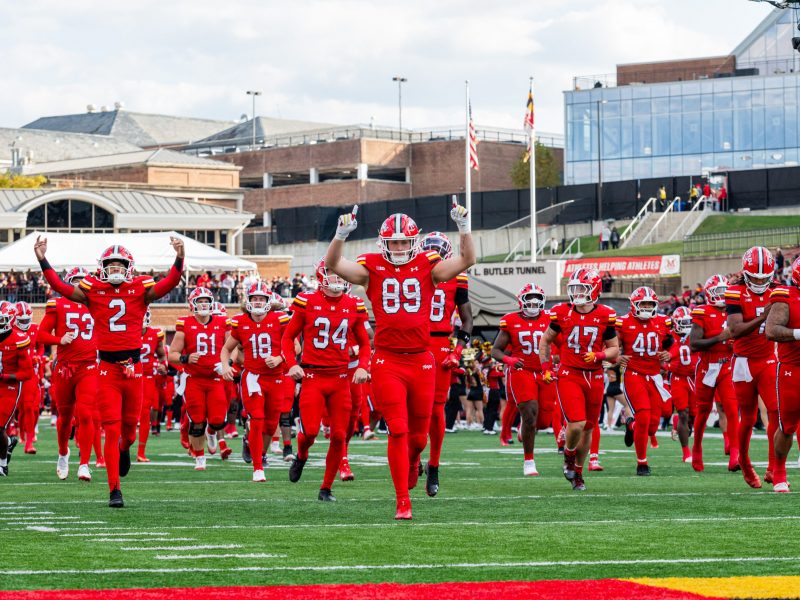
The new physical sciences complex
After almost four years of construction, the Physical Sciences Complex will begin opening its offices and laboratories to researchers based both on and off the campus this month.
In its 160,000 square feet, the $128 million complex will house state-of-the-art laboratories and offices for the university’s physics and astronomy departments.
Federal agencies, such as the National Institute of Standards and Technology and NASA’s Goddard Space Flight Center, will also use the facility, Assistant Dean for Facilties Tom McMullen said.
Located across from the Regents Drive Garage, the building features a large, oval-shaped cutout at its center with several large window panes above a garden and outdoor seating area.
“Standing underneath gives students an incredible view, and the design lets light shaft in throughout the building,” McMullen said. “It’s really an invigorating, one-of-a-kind place for physics and astronomy.”
Designed as a high-tech research building, the complex presents an improved space for experiments that allows researchers to have more control over variables, McMullen said.
“The labs greatly help research for physics,” he explained. “The temperature changes by plus or minus a degree and humidity only moves by plus or minus 1 percent. It’s all very stringent.”
There will also be labs in the basement, which will limit electromagnetic interference from cellphones and help cancel other unwanted vibrations.
The department will start moving in this month as renovations conclude, while researchers will trickle in throughout the year to begin new experiments in the complex.
“Researchers will be coming in throughout the year, once they’re ready,” McMullen said. “They have their other experiments set up in another building and some of them just can’t move so easily.”
Undergraduate students also have a new building to look forward to with Prince Frederick Hall, a dorm between Mowatt Lane Garage and Wicomico Hall, nearing the end of its construction.
While the exterior is mostly finished, construction workers are finishing up the interior: adding doors, windows, tiling, paint and other small details.
Once complete, the building will house 462 students in singles, doubles and semi- suites, and also will feature gender-neutral bathrooms on each floor, said North Hill Community Director Genevieve Conway.
“We’re excited to bring the hall to students,” she said. “And it should be a great option for on-campus housing.”
The Department of Building and Landscape Services will also receive a new workplace Wednesday with the completion of the $5.7 million Wye Oak building near Comcast Center, said interim Capital Projects Executive Director Bill Olen. The new building will bring together the old organization, which was originally split between two buildings that suffered from mold and other unfit working conditions.
The Pocomoke Building, next to Fraternity Row, also received major renovations in preparation for the University Police station to move to the building in late February or early March. Completed at the end of December, the building’s $9.5 million renovations will give police access to more space and improved technology that will strengthen security, Olen said.
“Pocomoke has new technology for the police, more locker facilities, new holding cells,” he said. “It will give police more secure ways and options.”
In the future, management’s eyes are set on the construction of the Edward St. John Learning and Teaching Center. Workers will begin building in June after a groundbreaking ceremony scheduled during Maryland Day on April 26.
The center, which is expected to be completed in 2016, will have nine new teaching labs and 11 classrooms, Olen said.


